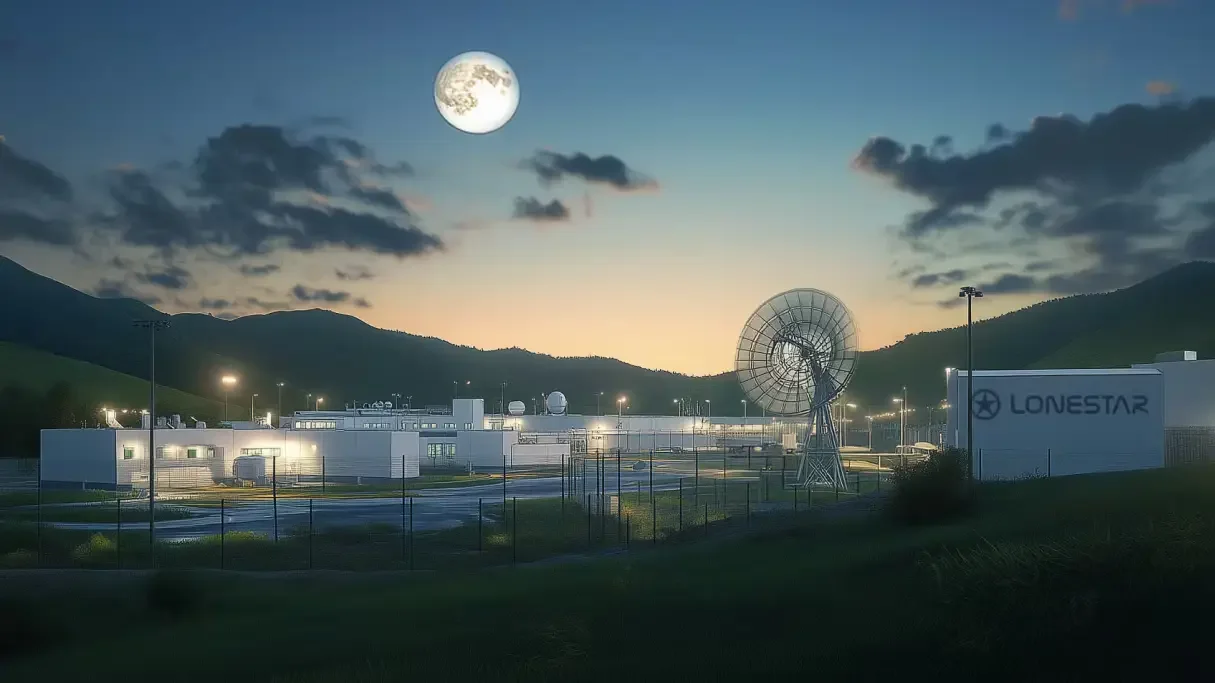“Lunar Storage as a Service”: The Logistics, Maintenance and Partnerships That Make It Real
Lonestar is one of few space-tech companies pioneering lunar data storage technology.
Credit: Lonestar Data Holdings
Building a cloud that reaches the Moon—and when the public will feel the difference
Turning a lunar data vault into a service means solving three problems at once: delivery, survival, and refresh—then wrapping them in SLAs a CIO can actually sign. No single company can do that alone; what’s emerging looks like a stack of collaborators that mirrors cloud on Earth.
The delivery layer: launch + lander + payload integration
Today’s vaults hitch a ride on commercial landers sold as transport services under NASA’s CLPS programme: Intuitive Machines (Nova-C), Astrobotic (Peregrine/Griffin) and Firefly’s Blue Ghost. Landers provide power, comms and thermal interfaces during cruise and early surface ops; payload teams (Lonestar, Lunar Codex, AMF, Lunaprise, AstroVault) integrate storage media, enclosures and software to those specs. The model works because each actor specialises—and because NASA’s CLPS buys delivery capacity at scale.
The survival layer: heat, cold, radiation and dust
The Moon’s surface swings between ~+127 °C and ~−173 °C; nights last ~14 days at most latitudes. Regolith dust is sharp and electrostatic, clogging joints and degrading optics; radiation doses for semiconductors accumulate. Service providers respond with hardened enclosures, thermal mass/phase-change materials, select polar sites with better sunlight, and dust-mitigation tech such as NASA’s electrodynamic dust shield (successfully trialled on Blue Ghost M1). For “store-forever” artefacts, nickel nanofiche avoids active electronics entirely.
The refresh layer: updates, verification and restore
A credible “storage as a service” needs data refresh and integrity checks. Near-term, that looks like periodic uplinks from Earth plus on-site checks during successive missions that revisit a site or carry a small maintenance rover. For live services, providers will publish hash-verified snapshots and restore drills just as terrestrial clouds do—only with lunar latency and stricter comms windows. Lonestar’s pathfinders explicitly aim to demonstrate data transfer and refresh between Earth and the Moon.
The ecosystem: who needs whom
Curators & storage providers: Lonestar, AMF, Lunar Codex, Lunaprise, AstroVault—they bring media, software, and customers.
Transport & operations: Intuitive Machines, Astrobotic, Firefly—landers and surface ops.
Launch & backhaul: SpaceX and DSN-like links for flight and downlink.
R&D & standards: universities (CMU MoonArk) and agencies (NASA dust studies; power/thermal standards) translate lessons into playbooks the whole stack can reuse.
The message: interoperability—mechanical, power, data formats, and cryptography—is the differentiator. Providers that publish interfaces, error budgets and recovery procedures will win larger customers first.
When do everyday people benefit?
This may happen in two phases. Now: cultural vaults—Lunar Codex, MoonBox, MoonArk—are already engaging schools, museums and creators, turning missions into tangible experiences. Later: consumer-grade “lunar backup tiers” sold via familiar cloud dashboards—your photos, legal documents or creative works synchronised to an off-planet archive with a proof-of-presence certificate. The recent cadence of landings (IM-1 in 2024; Blue Ghost M1 in 2025) shows the path from novelty to service.
Why should investors fund this?
Because the unit economics look like infrastructure: upfront capex to qualify hardware and media; then recurring revenue from storage tiers, archival payloads, data handling and IP licensing (dust/radiation-hardening, thermal solutions). The risk is technical—but mitigated by multi-party collaboration and a market already paying for resilience, compliance and storytelling. If you believe edge compute will follow humans and robots to the Moon, then data gravity moves there too—and early investors in “lunar storage as a service” are effectively buying the first data centre plots off-world.
